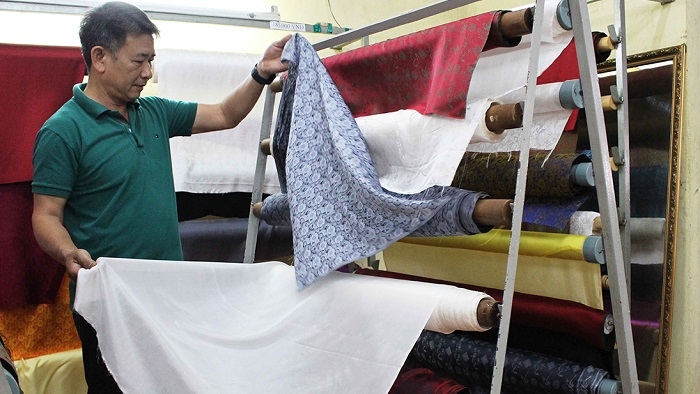
The sound of the shuttlecock moving on the loom, baskets of silkworms wrapped in their golden cocoons, and piles of glossy silk are some of the signature images of Lam Ha district, Lam Dong province.
The sound of the shuttlecock moving on the loom, baskets of silkworms wrapped in their golden cocoons, and piles of glossy silk are some of the signature images of Lam Ha district, Lam Dong province.
 |
| Piles of glossy silk on display at a shop in Lam Ha district (Photo: VnExpress) |
In addition to Bao Loc, the land famous for growing mulberries, raising silkworms and weaving silk, Lam Ha is another highlight on “the Silk Road” in the Lang Biang plateau.
Those who want to chase the clouds often leave Da Lat city early in the morning to seek to catch spectacular natural moments. After walking amidst many layers of floating morning fog, on the journey back to the city, visitors can enjoy the tranquil scenery on both sides of the road with houses nestling next to green mulberry gardens.
Staring from the Ta Nung Pass, they can discover the craft of silk weaving in Lam Ha district, one of the most attractive destinations along “the Silk Road" in the plateau.
Beautiful mulberry gardens on fertile basalt soil and the quintessence of the traditional craft of silk weaving create many beautiful silk products. Many textile factories in Lam Ha have become interesting attractions for visitors to Lam Dong province.
In Nam Ban town, each workshop is operated like a miniature craft village. Workers at the workshop are busy from early morning until late at night, participating in most production stages such as sorting cocoons, thread extraction, dyeing, spinning, and weaving.
Outside the weaving workshop, many families have set up a space to display their products and souvenirs for visitors. Anyone can select their favourite sophisticated and authentic Vietnamese handicraft products, as made by the skillful artisans of Lam Ha.
(Source:Nhan Dan)





